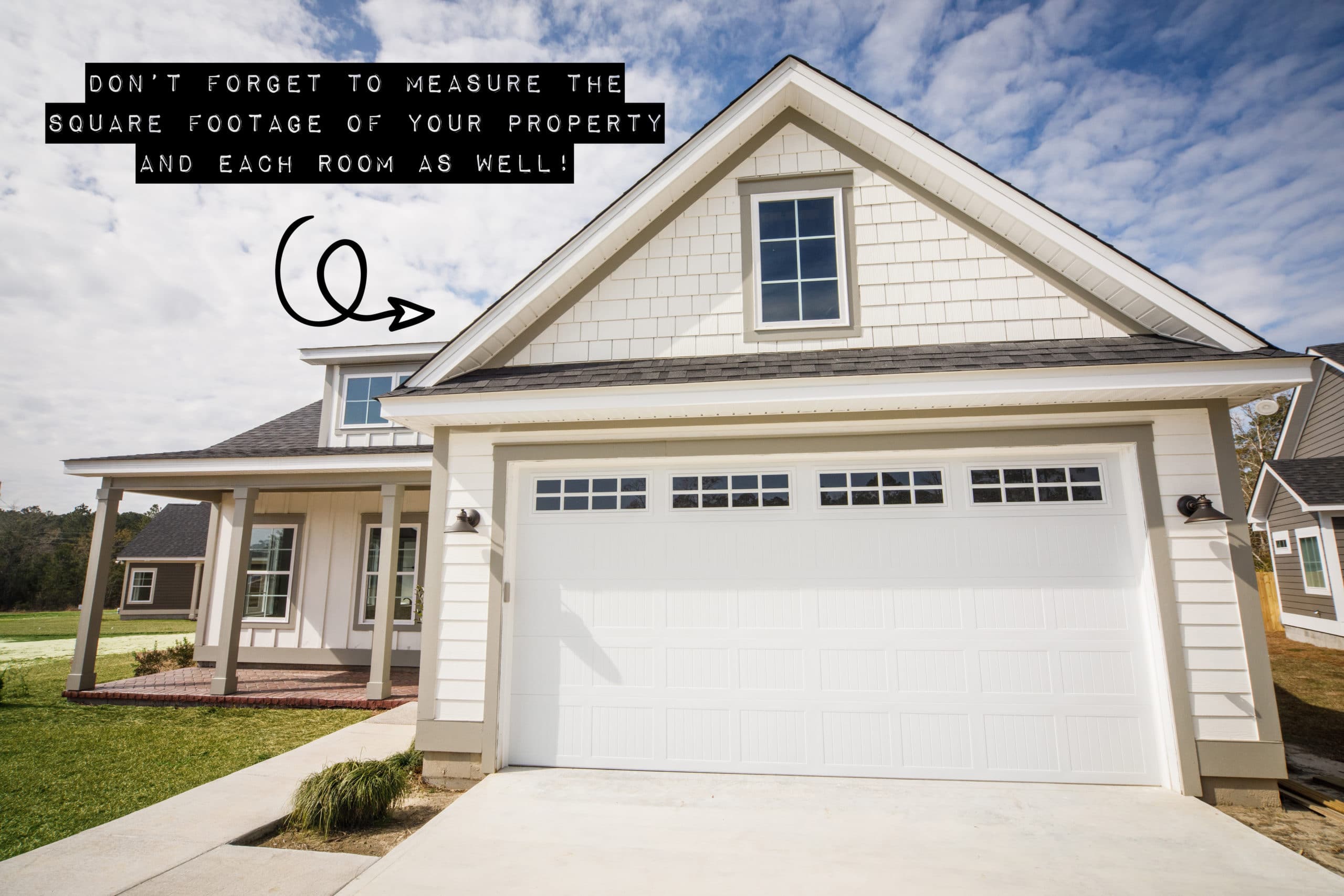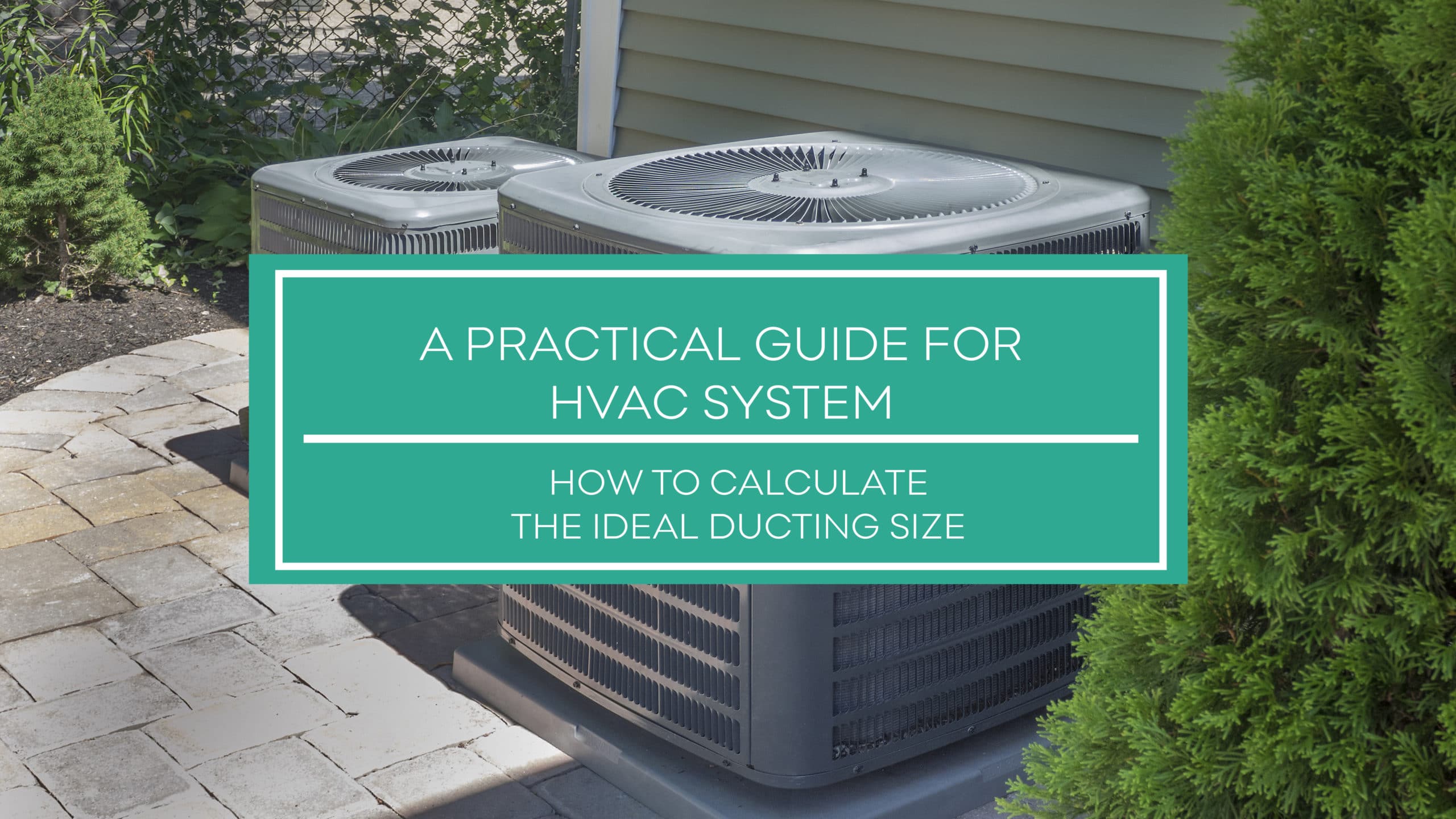In this guide, we'll cover everything you need to know about the general guidelines on how to find the correct ducting size for your HVAC System!
When installing an HVAC system, you need to take into consideration your ducting size. It's because HVAC systems can work more efficiently when selecting the proper sizing for your home and unit. For example, if the ducting is too small, your HVAC unit will have to work harder to cool or heat a room.
Whereas if it's too big, the velocity is compromised, meaning you won't feel a temperature change. Now you understand the importance of getting the ducting size correct, here's some HVAC duct sizing rule of thumbs you should follow:
When finding the ideal ducting size for your property, there are four vital elements you need to consider before doing anything. These are the square footage of your property, the square footage of each room of your property, the cubic feet per minute (CFM) your HVAC unit will provide, and the friction loss rate. With all these pieces of information, you’ll undoubtedly find your ideal duct size.
As you can see, selecting your duct size isn’t that complicated if you have your hands on the correct information. For anyone who isn’t aware of how to gain this valuable information, I suggest you become familiar with the below. Here we go into detail about the purpose of this knowledge and how it can help you find the best ducting size for your property and HVAC unit.
How to Get the Right HVAC Ducting Size
As mentioned above, you need to obtain four pieces of valuable information to understand what the perfect duct sizing is for your property. Knowing this is great, but understanding the reasoning behind it and obtaining them is even better. Want to learn how to choose the right duct size for your HVAC system? See below:
1. Square Footage of the Property
The overall size of your home and each room indicates the size of the HVAC unit required to change the property’s temperature. But you’ll be surprised that it also accurately gauges the size of ducting needed to use your HVAC unit.
To gain the best results from this, you’ll want to measure the square footage of your property—not just the property as a whole, but each room as well. To achieve this, run a tape measure across the length and width of every wall in the house. If you have odd-shaped rooms, you’ll want to try and create them into rectangular parts to gather the square footage data.
Note, you’ll want to write these down somewhere, as you’ll need them at the end to determine what size ducting you need for your HVAC system. Needless to say, when you have this information, it’s time to move onto the next part of essential data.

2. Cubic Feet per Minute (CFM) of HVAC Unit
Next, we need to discover the cubic feet per minute (CFM) your HVAC unit will provide you. The CFM is a measurement that indicates the total air velocity/flow needed to cool a room. As mentioned above, the size of the duct can determine how effectively an HVAC unit can cool or heat a room. Because of this, you’ll need to calculate the CFM of each room with the measurements we obtained from the first step. Here’s how you can calculate CFM:
Cubic feet per minute (CFM) = (HVAC Unit Tons x 400) / total square footage of home
Use the above calculation for each room also
To successfully calculate your CFM, you’ll need to know the size of your heating or cooling unit in tons. This number is then multiplied by 400, which is the average output of an HVAC unit (yours could be different).
Great, now you’ve gained this data, it’s time to get the final piece of information before making the last calculation to decide how large your HVAC duct needs to be.
3. Friction Loss Rate
The last vital unit to understand is the friction loss rate, as this will determine the static pressure that’ll build up in your ducts from your unit and the overall length of the ducts. This measurement will affect the overall air pressure/flow you’ll receive from your system.
The friction loss rate differs on duct size measurements. So, you’ll need to understand the number of filters, coils, registers, grills, and other parts in the system, including the overall length of ducting you’ll be using. However, it may be best to accumulate this information and send it off to a contractor. Based on the findings above, you can also fill in this calculator, which is specially designed to tell users the friction loss rate.
Finally, after undergoing the above, you now have all the valuable pieces of information to ultimately determine how large your HVAC ducting size will need to be. Here’s how you’re able to utilize these calculations and finalize your decision.
How to Calculate Duct Sizing for an HVAC System
To calculate your ducting size, you’ll need all of the above data because many pieces of information, such as your property size, CFM, and friction loss rate, will ultimately determine how large your duct size needs to be.
However, although many online calculators claim they’ll work out the size of your ducting for your HVAC system, a lot of them are incorrect. Therefore, it’s recommended to contact an HVAC professional to undergo the last measurement for you to calculate your ducting size because they have access to more sophisticated tools and understand the importance of these calculations.
Before you start developing anything, get an HVAC professional to look over the duct sizing for you. The amount you’ll pay them will be more than worth the price of the reduced cooling or heating bills you’ll encounter from getting the duct sizing correct.
Conclusion
After reading, you should now be aware that calculating your HVAC ducting size requires a few pieces of valuable data. It’s essential to get the sizing of your ducting correct. Because of this, it’s always recommended you get a professional to finalize your calculations. Undoubtedly, you’ll receive a much better output which could save you some money in the long run.

